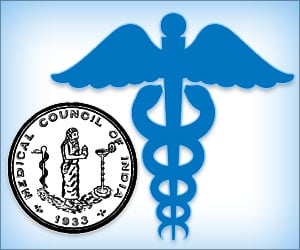Germany’s embryo protection law has had the unintended consequence of increasing the number of foetuses killed after fertility treatment.
According to new figures presented at the European Society of Human Reproduction and Embryology, Instead of preserving life, Germany’s embryo protection law has had the unintended consequence of increasing the number of foetuses killed after fertility treatment.
The German embryo protection law, passed in 1991, stipulates that no more than three embryos can be created per cycle of IVF and all three, regardless of their quality, must be transferred to the patient’s womb at one time, and cannot be frozen or discarded.For the first time, figures for 2004 from the ESHRE European IVF monitoring consortium show that out of 8,500 deliveries in Germany in 2004 there were 222 foetal reductions performed (representing 2.6%).
Foetal reductions are performed when a woman has a multiple pregnancy and doctors consider it necessary to reduce the number of foetuses she is carrying in order to increase the chances of the remaining ones surviving. It is also performed when doctors discover that foetuses are abnormal.
Professor Ricardo Felberbaum, from the German IVF registry and a member of the ESHRE European IVF monitoring consortium, said: “Germany’s embryo protection law is not in accordance with ART [artificial reproduction technology] practices now.
Foetal reduction is being used in Germany much more than was expected and the German administration must face up to the situation that the 1991 law prevents optimal treatment of the patient and does not protect the embryo either. The law needs to be changed urgently to reflect the current state of the art.
“It is far worse to kill embryos after they have implanted in a woman’s womb, than it is to take embryos before implantation, when they are no more than a collection of cells, freeze any surplus embryos and transfer no more than one or two embryos at one time. It is best that only those with the highest implantation potential are used, leading to healthy singleton pregnancies.
Advertisement
Other figures from the consortium show that the number of ART procedures in Germany has nearly halved since state funding for them was cut.
Advertisement
“In 2003, Germany announced that it would be cutting its generous reimbursement of fertility treatment by 50% and in that year there was a sudden surge in the number of procedures from 84,819 in 2002 to 102,426 as couples rushed to take advantage of the existing funding arrangements.
The following year, when the new reimbursement rules were implemented, total activity dropped by nearly 50 per cent to 60,425. Significantly, this was a persistent effect because the number of cycles remained at this lower level in 2005.”
Prof Nyboe Andersen, of Rigshospitalet, Copenhagen, Denmark, was presenting data on behalf of the ESHRE European IVF monitoring consortium, which has been gathering information on ART procedures in Europe since 1997. These new figures relate to ART in Europe in 2004 – the most recent year for which data are available.
“The number of ART procedures has steadily increased over that time,” said Prof Nyboe Andersen. “In 2002 there was an overall increase of 13 per cent increase on 2002. However, in 2004 this rate of increase had slowed to just two per cent. This is almost entirely due to the drop in the number of cycles in Germany.”
Prior to 2004, Germany carried out the most number of ART procedures in the whole of Europe, with France and the UK in second and third place respectively. However, in 2004 France performed the most ART procedures (nearly 70,000), followed by Germany (just over 60,000), Spain (nearly 41,000) and the UK (just over 40,000).
There were 370,963 cycles in the 29 European countries reporting to the consortium in 2004. As a comparison, the USA carried out approximately 130,000 cycles.
The availability of ART as measured by number of cycles per one million inhabitants is highest in Denmark, where couples are entitled to at least three free cycles of fertility treatment, with 2,128 cycles per million in 2004. By comparison, availability in Germany dropped from 1,243 cycles per million in 2003 to 803 per million in 2004. Availability in France was 1,154 per million, in Belgium 1,974 per million and in the UK 665 per million.
The data confirms that the proportion of ICSI to IVF procedures has continued to move in favour of ICSI, with 166,711 ICSI (intracytoplasmic sperm injection) procedures (60 per cent) versus 114,512 IVF (in vitro fertilisation) procedures (40 per cent). The number of frozen embryo transfers has continued to increase, rising from around 18 per cent when the consortium first started collecting data to 26 per cent in 2004.
“This is a very positive development,” said Prof Nyboe Andersen. “This means that patients are not having to go undergo repeated cycles of ovarian stimulation because enough eggs are being collected from the first cycle to freeze for use at a later date if the first cycle using the fresh eggs fails. This is much better for the health of the women.”
The increasing use of frozen eggs has also led to improvements in the proportion of babies born after ART. In Finland, there were 4,761 ART cycles started and nearly 19 per cent resulted in births when fresh oocytes were used, but the cumulative delivery rate from both fresh and frozen oocytes was 30 per cent.
By contrast, in the UK, from 30,495 cycles, 22% of the deliveries occurred after fresh oocytes were used, but the cumulative delivery rate (fresh and frozen oocytes) was only 25 per cent because there were proportionately fewer frozen embryo transfers.
“Finland is the first country in the world to show at a national level that cryopreservation [freezing] is a very effective way of increasing the numbers of babies born after ART, because approximately third of all its ART deliveries were from frozen embryos,” said Prof Nyboe Andersen.
Source-Eurekalert
JAY/M





